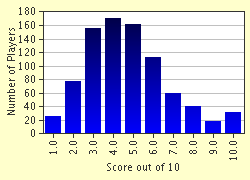Quiz Answer Key and Fun Facts
1. This person has the distinction of being the first victim of the French guillotine, in 1792.
2. Thomas Cranmer became a martyr when he was burned at the stake in England in 1556. What title did he hold?
3. What claim to fame does William Kemmler have?
4. In 1982, Charles Brooks became the first person in the US to be executed by lethal injection. In what state did this occur?
5. In one of the biggest ironies of history, this king, who helped to develop the guillotine, was later a victim of it.
6. Alice Arden, burned alive in Canterbury, England, in 1551, became the subject of a famous Elizabethan play, "Arden of Feversham". What was her crime?
7. Which day of the week was traditionally used for executions, becoming known as "Hangman's Day"?
8. Mary Dyer was hanged in Boston, US, in 1660. Her crime was being a(n) ____.
9. This philosopher is credited with being the first to speak out against capital punishment.
10. Most people know that Socrates was executed by drinking hemlock in 399 BC - but what was his crime?
Source: Author
bullymom
This quiz was reviewed by FunTrivia editor
bloomsby before going online.
Any errors found in FunTrivia content are routinely corrected through our feedback system.


